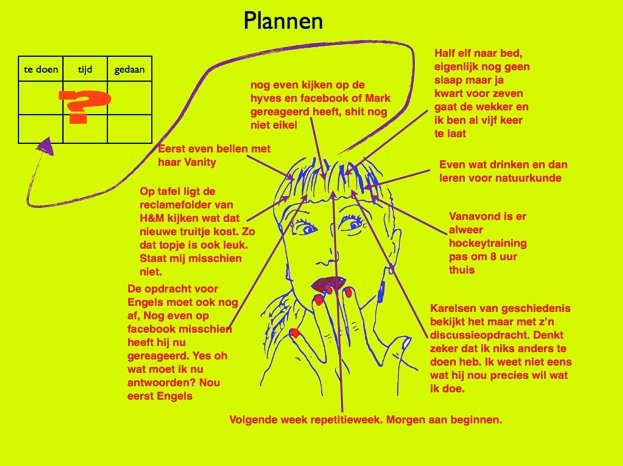cameras, photos and stories
Executive functions
Executive functions, also called control functions, are functions such as:
- Interference: process in which someone makes mistakes in automated tasks because the task asks for something different than what he expects
- Filter and cluster information
- Use feedback
- Use working memory effectively
- Inhibition: stopping behavior in time,
- Keep your attention
- Flexibility: being able to flexibly switch between different tasks and the way you approach certain tasks.
- Self-management
- Selective attention
- Conflict management
- Error detection
Adults can generally handle these functions better than adolescents, because the prefrontal cortex is not yet fully developed in adolescents. Adolescents have difficulty dealing flexibly with new changed circumstances. They find it more difficult to stop behavior once it has started and they are more sensitive to short-term rewards and have less insight into long-term consequences. In particular, a part of the prefrontal cortex, the lateral frontal cortex, is still developing strongly in adolescence. . The lateral frontal cortex is the part of the prefrontal cortex that is especially important for:
- Solving problems,
- Retaining information and
- Stopping unwanted behavior in time.
It takes until about the age of twenty before people can use their executive functions optimally.
Sandra
Sandra is fifteen. She is in the third year of HAVO and would love to move on to the fourth year, not least because she will then be able to stay with her best friends. But when she comes home from school, there are so many other things that require her attention besides schoolwork.
